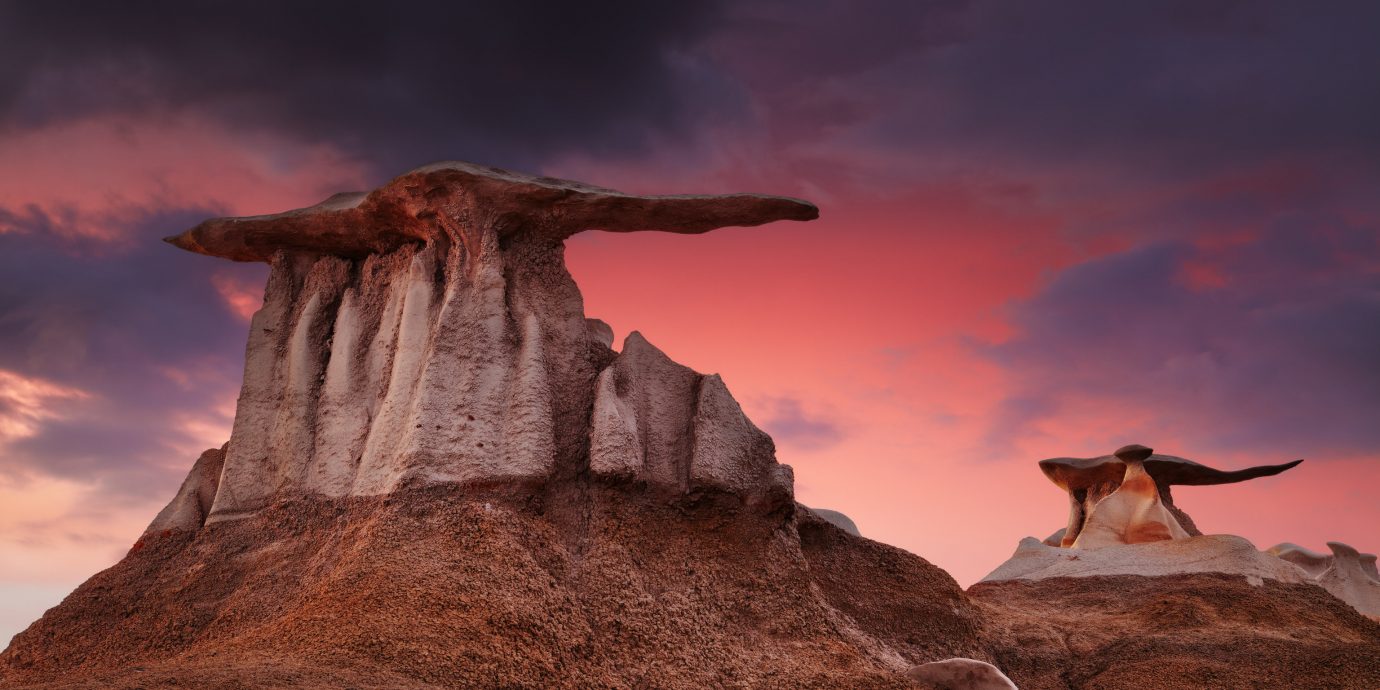from 398 reviews
7 Days
Daily Tour
Unlimited
___
Sahara-like sand dunes. Ancient Pueblo civilizations. Emerald green grottos. Get ready to have your mind blown.

As the largest national park in the lower 48 states, Death Valley has plenty of eye-opening sights, including flowing waterfalls, canyons, badlands, craters and sand dunes. But the most striking feature? The Badwater Basin‘s salt pans. Billions of crystals form a surreal polygonal pattern, and the rugged Black Mountains loom in the distance.

Vail’s snowy trails aren’t the only slopes you can ride down in Colorado. Between the San Juan Mountains and the Sangre de Cristos, these sand dunes stretch across 30 square miles of the state’s southern San Luis Valley. Hike the biggest dunes in North America (up to 750 feet tall!), then go sandboarding down the steep hills. Serious bragging rights.

The Stairway Ridge Trail in upstate New York is a stone footpath surrounded by verdant hills. Although the climb is strenuous, there’s a reward at the summit: a granite castle with 360-degree views of the lakes and Adirondacks. On a clear day, you can even see as far as Vermont and Canada.

We bet you can’t guess how old this World Heritage Site is. Built by the Ancestral Pueblo people, Mesa Verde’s sandstone kivas date back to AD 600. Today, the national park has 5,000 archaeological sites, including 600 cliff dwellings. Tour the largest edifice, the Cliff Palace, then walk the Petroglyph Point trail to see ancient drawings etched into the rocks.

Not many people know about this rainbow-colored, alien-esque attraction, but that doesn’t mean it’s not worth a detour. Located on private property in Nevada’s Black Rock Desert, the man-made geyser spews water five feet in the air. Spot it on a drive-by along State Route 34.

Stretching across 41,170 acres in northwest New Mexico, these badlands have a seriously eerie vibe. When the sun sets, shadows sweep over the strange spires and hoodoos. The stark landscape — which is now part Navajo territory — was once a sea, but as the water disappeared over time, it left a 1,400-foot-thick layer of mudstone, shale and coal that’s been untouched for more than 50 million years. It’s no wonder so many dinosaur fossils have been found here.

Don’t let the above picture fool you; this isn’t a Mexican cenote. Just 23 miles west of Austin, there’s an emerald grotto where 50-foot waterfalls flow from a limestone overhang and splash into the oasis below. Walk around the pool and marvel up at the stalactites, before taking a dip in the natural spring.
zoritoler imol
What’s Going down i'm new to this, I stumbled upon this I've found It absolutely useful and it has helped me out loads. I hope to contribute & aid other users like its helped me. Great job. https://www.zoritolerimol.com